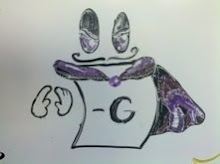Sometimes I wonder how much players should expect board game designers to get the rules right the first time. It seems to me that there are lots of games being published these days and it might be difficult to detect all the errors prior to publication. Still, I am often surprised at what is either a small amount of playtesting or a bad translation of playtesting to actual rules.
Having said this, I know I am already guilty of not getting to do enough playtesting when it comes around to designing new combinatorial games. It's hard to see how a game will play out unless you can find opponents, which I assume is more difficult in the academic setting as opposed to an actual game manufacturer. Still, it does seem reasonable that small pieces may be missing from a rule (for example, a stalemate rule). It's nice when the solution to these is easy enough to see and implement.
I'm having a more difficult problem resolving a conundrum with Ninja versus Ninja. I've mentioned this game before, but after posting on the topic of confusing/incorrect rules this week, it again jumped into my head.
To quickly explain the uncertainty, this page describes the different possible moves in one turn after a throw of the two four-sided dice. The goal is for your ninja to infiltrate the opposing dojo and either end your move on one of their ninja (thus eliminating them from the game) or just returning for a number of points equal to the distance your ninja was able to infiltrate. Ninja only have three turns to leave their dojo and return, so you do not often hang out in enemy territory. Instead, ninja will often use the reverse move to go deep and then turn around.
In order to prevent the easy capture of ninja, movement is restricted to either going in a straight line or an L-shaped move, and jumping of other ninja (even your own) is not allowed. The reverse allows your ninja to move in a straight line, then turn back around at one point, though this is only allowed in the opponent's dojo. The rules then suggest that a good strategy is to move your ninja directly next to an opponent's ninja, since then "there is no way for that Ninja to eliminate your piece (the two dice can only roll the numbers 2–8)".
This isn't true, however! If they roll an odd number (and are in your dojo and are deeper in your dojo than your piece) they can move further in and then reverse into your ninja. If they roll a 2 and a 3 on the dice, they can move forward two spaces, then reverse three, landing on your ninja they were initially next to.
That seems mostly legal. It plays pretty well and can be a bit hard to make happen (see all the requirements above). Sadly, it means that the strategy of moving your piece in position to attempt to block them getting back to the dojo doesn't really work.
Even more unclear and potentially damaging is the use of combining an L-move and a reversal. In this scenario, a ninja is moved a few squares sideways (not deeper into either dojo), then towards the opponent's dojo, then reverses and heads backwards. Everything seems to work fine during the reverse---so long as you don't reverse past the space you turned at. For instance, a ninja who has 6 spaces to move could move 1 square to the left, then forwards 2 squares, then backwards 3. In this way, the ninja is essentially able to land on (and kill) a piece one square left and one square backwards from it's starting position, even though it didn't roll a 2. This combination is often too strong.
My fiancee and I have changed this to not allow the reversing-with-an-L ninja to use more spaces than occur in the L-shape. Thus, the ninja cannot move further backwards than forwards. This is a pretty tame change, though it plays a lot better than allowing the rules as they appear to be stated.
Other potential rules alterations I would consider:
1) Don't allow ninja to move further backwards than forwards on any reversal. This would actually prevent the can't-kill-neighboring-ninja statement the "strategies" part of the rules claims is impossible.
2) Allow ninja to move further backwards than forwards on reversals, but only if the move does not end them on another ninja. This allows more liberal reversals, but still restricts the ninja from using it to capture other ninja.
3) Don't allow reversals at all. (I want to try playing this way.)
Perhaps there are not many Ninja Versus Ninja players out there at this point, but if anyone has played this game and had a similar problem, please let me know!
On the other hand, which other games (seem to) need a change to the rules to make them (more) playable?
Jokes from the Audience
5 days ago



No comments:
Post a Comment